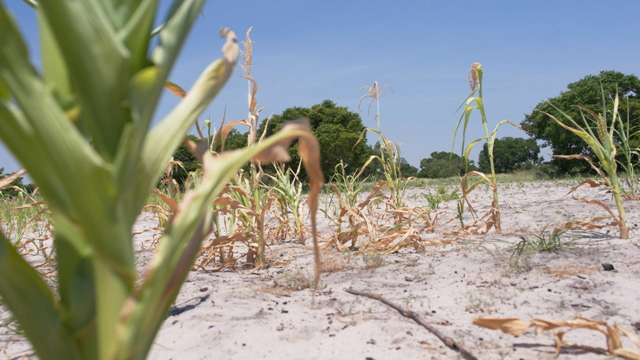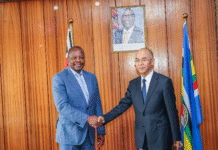
With climate change disrupting weather patterns and jeopardizing food security, scientists are equipping themselves with the knowledge and skills to leverage advanced crop models and climate data. These models act as digital simulations, allowing researchers to assess potential climate impacts and develop tailored adaptation strategies for various scales, from individual fields to entire landscapes.
Crop modeling is no longer just a research tool. It’s now empowering farmers with timely, climate-smart information. Imagine farmers receiving personalized advisories on planting times, crop choices, and management strategies in response to changing weather patterns. This is the transformative promise of crop modeling in agricultural decision-making.
These models are a game-changer and when well-adapted, can guide farmers in making crucial decisions about resource use efficiency (water and nutrient use management), agronomic operations (planting dates, weeding, harvesting), and even anticipating potential pest and disease problems, ultimately helping us navigate the challenges of a changing climate.”
“The application of crop models is still a developing field, but it holds immense potential for empowering farmers,” explains Professor Tafadzwanashe Mabhaudhi from LSHTM. “By understanding the specific risks their crops face due to climate change, farmers can make informed decisions about planting dates, crop choices, and water management, ultimately increasing their resilience and ensuring better yields.”
The recent advancements in crop modeling offer a transformative approach to address the ever-evolving challenges in agriculture, especially with looming climate uncertainties.
A case in point: GROWSMART
One such groundbreaking initiative is the GROWSMART advisory service, developed by the CGIAR Excellence in Agronomy Initiative, in collaboration with CGIAR Centers and partners in Southern Africa. What sets GROWSMART apart is its robust framework, which integrates remote sensing, machine learning, and crop models. This amalgamation of cutting-edge technologies provides farmers with actionable insights, not just information, to navigate the challenges of a changing climate.
Tailored for farmers and extension agents in English and Chinyanja, GROWSMART utilizes existing data to offer insightful agronomy support with a specific focus on El Niño. This climatic phenomenon disrupts agricultural landscapes. This collaborative effort aims to empower farmers by disseminating vital El Niño information through diverse platforms, including tailored messages for various stakeholders.
Other collaborations include the Agricultural Model Intercomparison Project (AGMIP), which is a major global initiative linking the climate, crop, and economic modelling communities of practice to develop improved crop and economic models and the next generation of climate impact projections for the agricultural sector.
While acknowledging the complexities of downscaling climate data and improving the inter-comparability of models, the practical impact resonates deeply with farmers. Mrs. Mkhize, a beneficiary of the Agricultural Model Intercomparison Project, shares her experience: “The SMS alerts are crucial for my family and me to prepare for upcoming weather conditions. Recently, I received a warning about heavy rainfall, allowing me to store rainwater for future irrigation, as advised.” Her story underscores the empowerment farmers gain through these agro-advisory tools.
Beyond technology:
The innovations showcase the practical benefits of equipping farmers with reliable information from well-adapted models. In regions where agriculture is the lifeblood, these innovations become lifelines. The tailored messages serve as guideposts, navigating farmers through the complexities of climate change.
A holistic approach:
Aligning crop modeling initiatives with global sustainability goals exemplifies a holistic approach, addressing immediate concerns while contributing to the broader dialogue on global agricultural sustainability.
Looking ahead:
Reflecting on these technology-driven agro-advisory services reveals their far-reaching impact. The transformative shift in how farmers approach their work, from anticipating rainfall for irrigation to navigating El Niño, showcases the potential of crop modeling to reshape agriculture. These agro-advisories represent a symphony of innovations, leveraging diverse technologies and collaborative partnerships to address farmers’ unique challenges. Refining and expanding such innovations remains paramount as we look to the future. Through this intersection of technology, collaboration, and community engagement, we can nurture resilient agriculture and ensure a sustainable future for rural communities in Sub-Saharan Africa.
We have a moral responsibility to leverage every tool available to build the resilience of our agricultural systems. The food security of millions of people depends on proactive solutions. Let’s embrace crop modeling, not as a replacement but as a powerful supplement to navigate the unpredictable world of climate change. Investing in crop model development and training for farmers and advisors is an investment in our collective future.
In conclusion, the call to continue research and development is more than just an academic pursuit. It’s a commitment to empowering the backbone of our food systems – the farmers. Crop modeling signifies a paradigm shift towards resilient and climate-smart agriculture that leaves no one behind. It is a call to action for sustained investment, collaboration, and innovation.
About the CGIAR Excellence in Agronomy Initiative
The CGIAR Excellence in Agronomy Initiative was launched in 2020 to improve outcomes for smallholder farmers amidst climate change. EiA is supported by the CGIAR Big Data Platform and will combine big data analytics, new sensing technologies, geospatial decision tools, and farming systems research to come up with scalable agronomic innovations for agricultural development. The initiative is not only responding to demand from the public and private sector but will also help increase efficiencies through stronger collaboration and cross-learning among CGIAR centers and within the broader agronomy R&D ecosystem.








[…] News Source: farmersreviewafrica.com […]
Comments are closed.